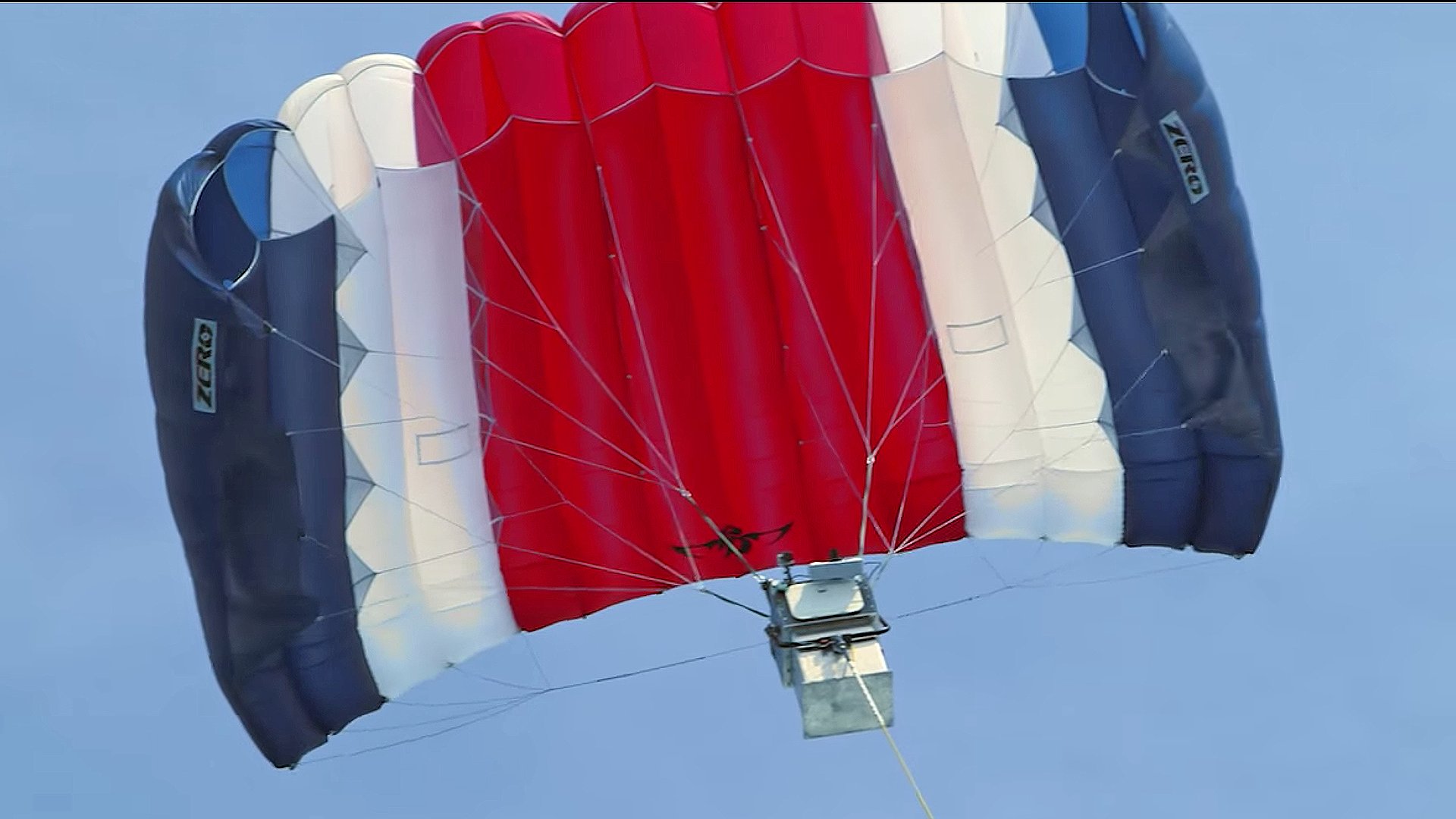The Anti-Submarine Warfare Continuous Trail Unmanned Vessel, much better known as simply ACTUV, is DARPA’s ambitious technology demonstrator, a project which aims to potentially change the way the Navy tracks enemy submarines. A loft goal on its own, but ACTUV’s unmanned capabilities could also help revolutionize shipping, environmental monitoring, and save lives on the high seas. And when the program isn’t researching ways to take the sailor out of the ship or tail enemy subs for weeks at a time other sensors and concepts are being tested aboard the one-off vessel. Case in point the Towed Airborne Lift of Naval Systems (TALONS) program.
TALONS is remarkably simple in concept: It’s a winch-attached parachute that can be towed behind a ship or a boat while underway – very similar to the parasailing rides offered in vacation spots around the globe. But instead of carrying a couple on their honeymoon aloft it carries intelligence, surveillance and reconnaissance payloads weighing up to 150 pounds. Not only that, but it also goes quite a bit higher than your average ski-boat towed revelers, up to 1,500 feet to be exact.

By being able to lift sensors like radars, infrared surveillance systems and communications nodes far up into the sky, the ship towing the parachute-like airfoil bound payload can ‘see’ and communicate much farther than if the sensors were mounted on the ship’s mast. The long-time limitation of naval vessels’ sensors communications systems has been the curvature of the earth. With TALONS, that limitation can be greatly overcome, and in a cheap and relatively simple manner that doesn’t require complex aircraft, pilots or handlers. At 50 feet, line of sight is just eight miles. Peering down from 1,500 feet the line of sight to the horizon is nearly 50 miles in any direction.
DARPA describes the recent tests with TALONS and ACTUV off the southern California coast:
“The demonstration took place over two days with 90 minutes of flight each day. The TALONS prototype started out from its “nest” installed on the back of the ACTUV vehicle. It then expanded its parachute and rose to an altitude of 1,000 feet, where it tested its onboard sensors and communications equipment. Once the test was complete, the prototype reeled itself in back to the nest. The entire process took place as the ACTUV vehicle maneuvered at operationally realistic speeds.
While aloft, TALONS demonstrated significant improvements to the range of the sensors and radios it carried compared to mounting them directly on a surface vessel. For example, TALONS’ surface-track radar extended its range by 500 percent—six times—compared to its range at sea level. Its electro-optical/infrared scanner doubled its observed discrimination range. The TALONS team plugged in a commercial handheld omnidirectional radio; that radio’s range more than tripled.”

Dan Patt who manages TALONS for DARPA added:
“TALONS showed the advantages of using a low-cost add-on elevated sensor to extend the vision and connectivity of a surface asset and ACTUV demonstrated its ability as a flexible and robust payload truck…This demonstration was an important milestone in showing how clever use of unmanned systems could cost-effectively provide improved capabilities.”
ACTUV began testing just last June after being shipped from Portland, Oregon to San Diego. The idea that it is already being used as a new surrogate for experimental subsystems is pretty incredible. TALONS itself only took 90 days to go from approval to testing and is part of the TERN program picking up steam within the Pentagon. If fully realized, the cocktail of technologies that come out of TERN could drastically increase the capabilities of the Navy’s ‘small deck’ surface combatants.
Now that this initial demonstration is complete, the TALONS program is being transferred over to the Navy for further evolution. As for ACTUV, it will continue testing for the next couple of years before the program has the chance to be transferred over to the Navy. During that time, we will likely see more modular systems tested onboard the drone ship, following a long history of exotic one-off vessels that have helped pave the way for the technologies and operational concepts now deployed by the US Navy.
Contact the author Tyler@thedrive.com
